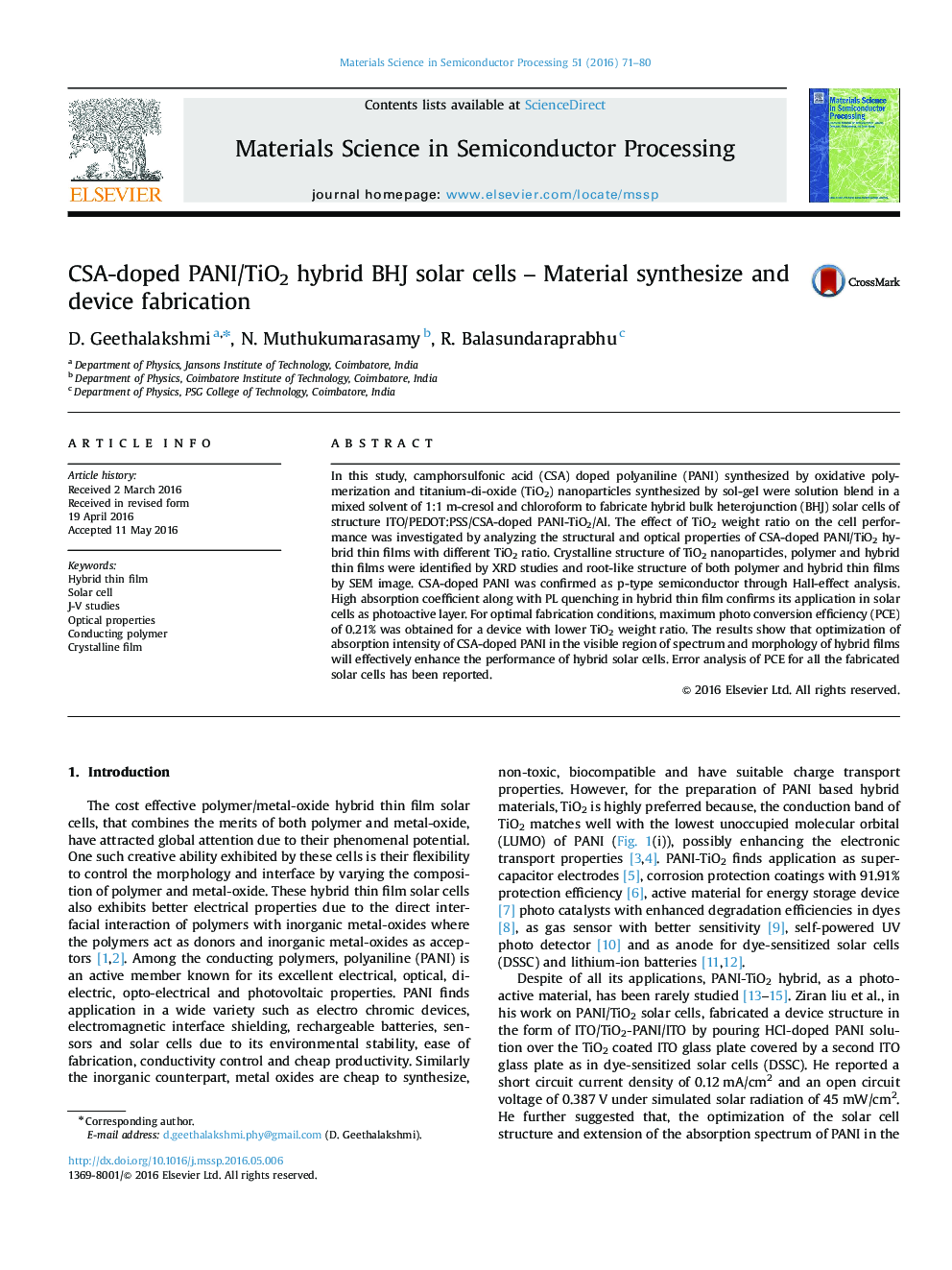| Article ID | Journal | Published Year | Pages | File Type |
|---|---|---|---|---|
| 7118561 | Materials Science in Semiconductor Processing | 2016 | 10 Pages |
Abstract
In this study, camphorsulfonic acid (CSA) doped polyaniline (PANI) synthesized by oxidative polymerization and titanium-di-oxide (TiO2) nanoparticles synthesized by sol-gel were solution blend in a mixed solvent of 1:1 m-cresol and chloroform to fabricate hybrid bulk heterojunction (BHJ) solar cells of structure ITO/PEDOT:PSS/CSA-doped PANI-TiO2/Al. The effect of TiO2 weight ratio on the cell performance was investigated by analyzing the structural and optical properties of CSA-doped PANI/TiO2 hybrid thin films with different TiO2 ratio. Crystalline structure of TiO2 nanoparticles, polymer and hybrid thin films were identified by XRD studies and root-like structure of both polymer and hybrid thin films by SEM image. CSA-doped PANI was confirmed as p-type semiconductor through Hall-effect analysis. High absorption coefficient along with PL quenching in hybrid thin film confirms its application in solar cells as photoactive layer. For optimal fabrication conditions, maximum photo conversion efficiency (PCE) of 0.21% was obtained for a device with lower TiO2 weight ratio. The results show that optimization of absorption intensity of CSA-doped PANI in the visible region of spectrum and morphology of hybrid films will effectively enhance the performance of hybrid solar cells. Error analysis of PCE for all the fabricated solar cells has been reported.
Related Topics
Physical Sciences and Engineering
Engineering
Electrical and Electronic Engineering
Authors
D. Geethalakshmi, N. Muthukumarasamy, R. Balasundaraprabhu,
